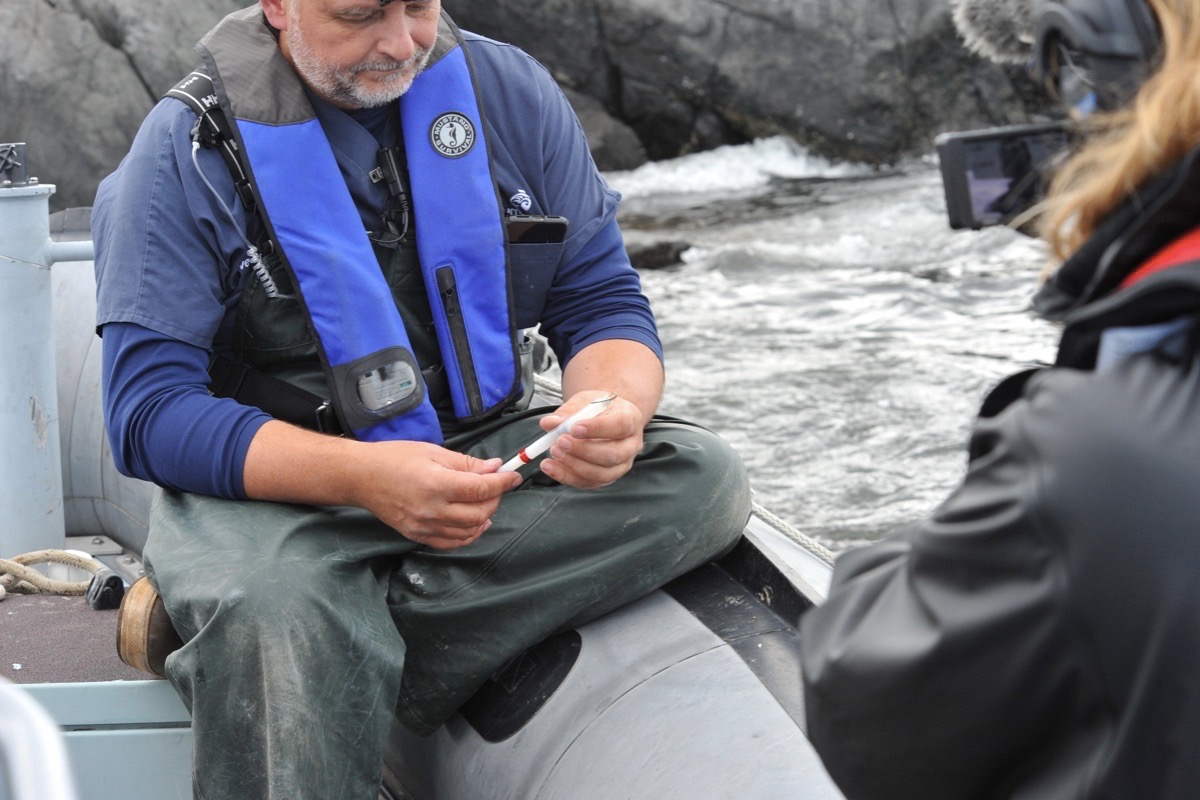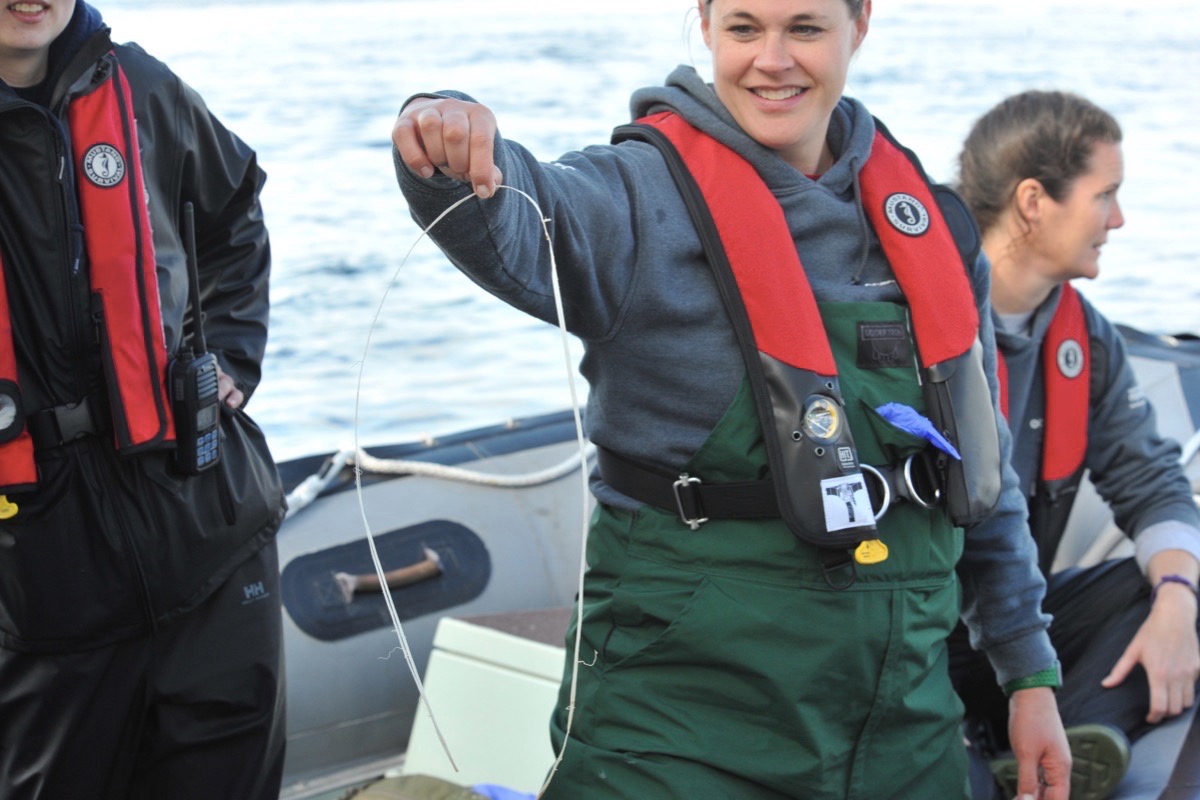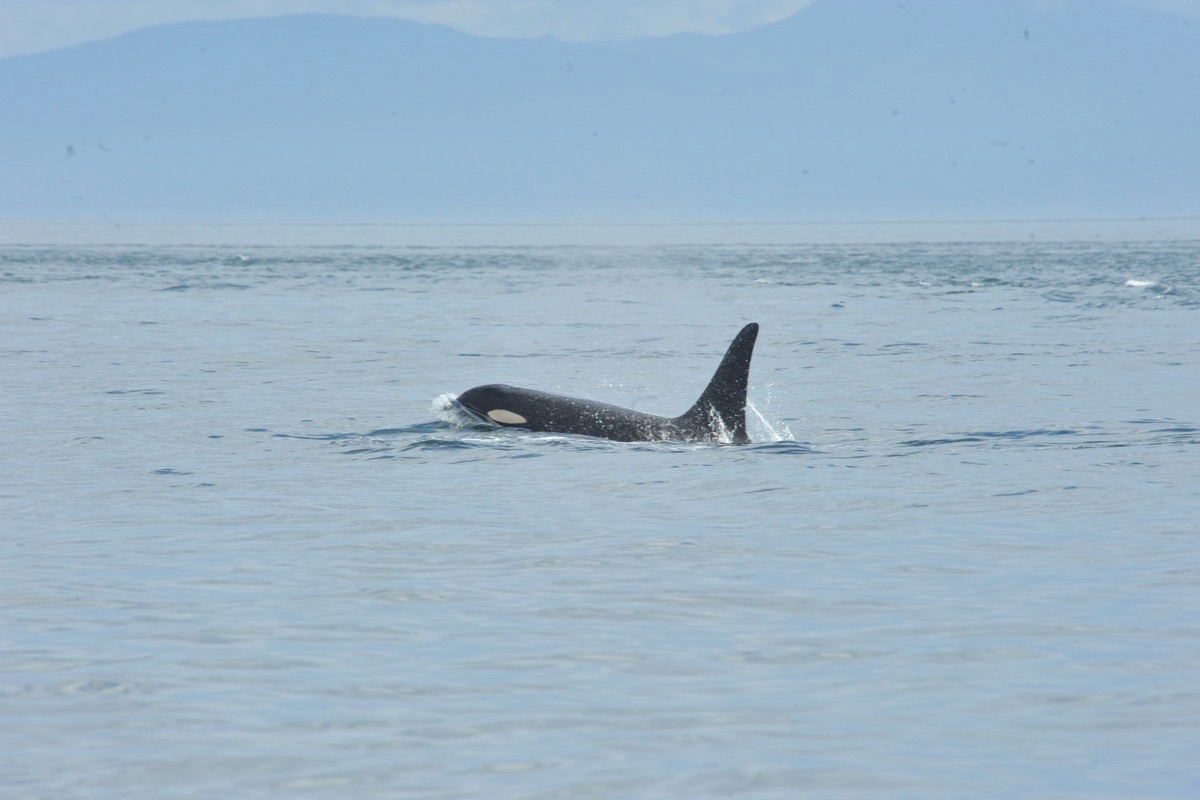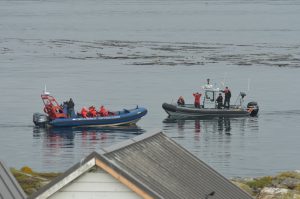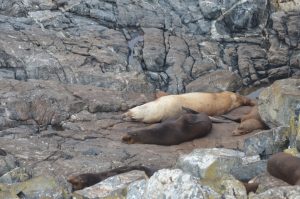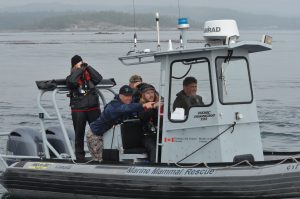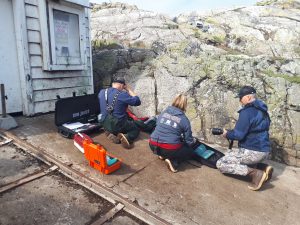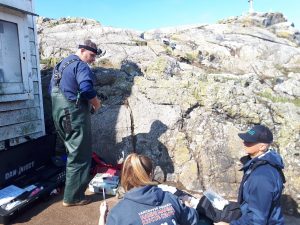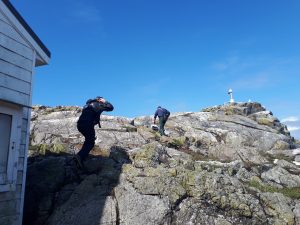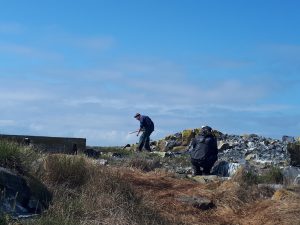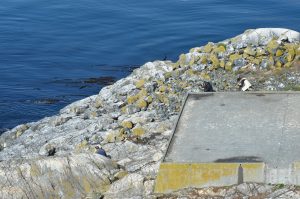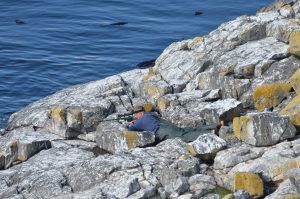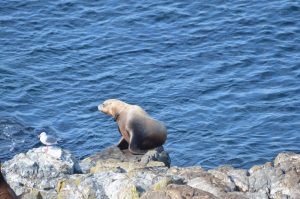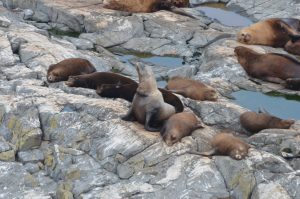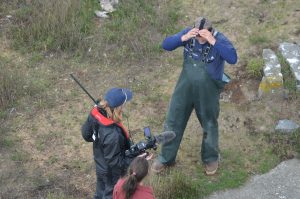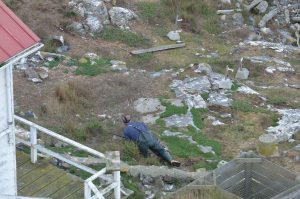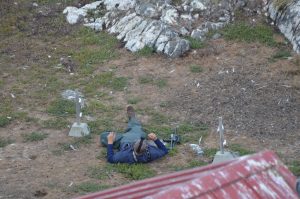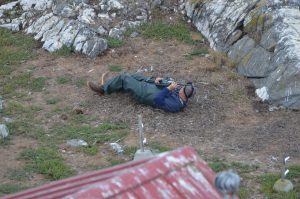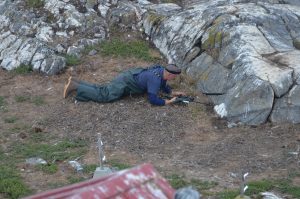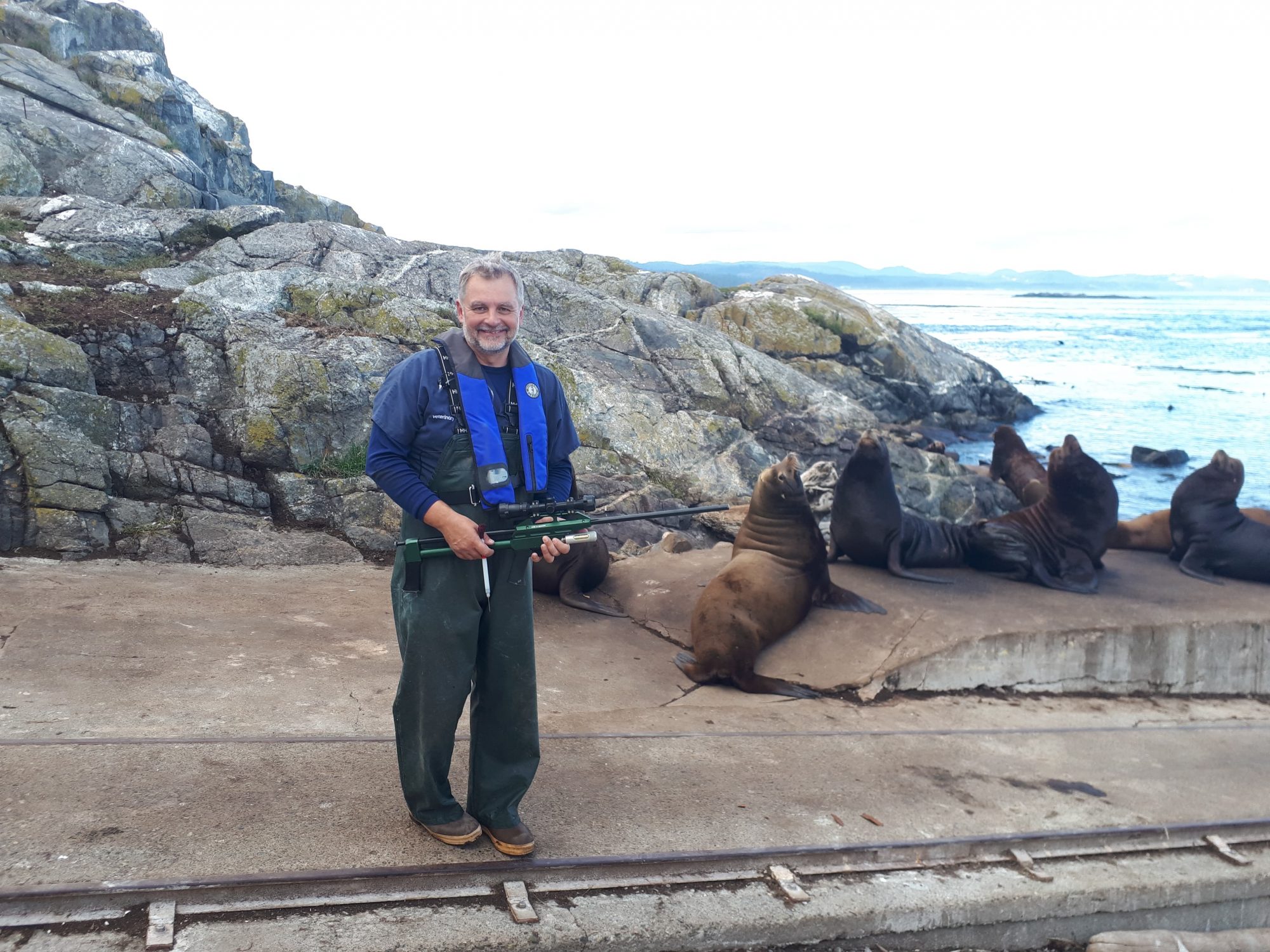From The Goldstream Gazette BC LOCAL NEWS
Sep. 22, 2019 12:00 a.m.
PHOTOS: Steller sea lion with plastic around neck rescued on Vancouver Island
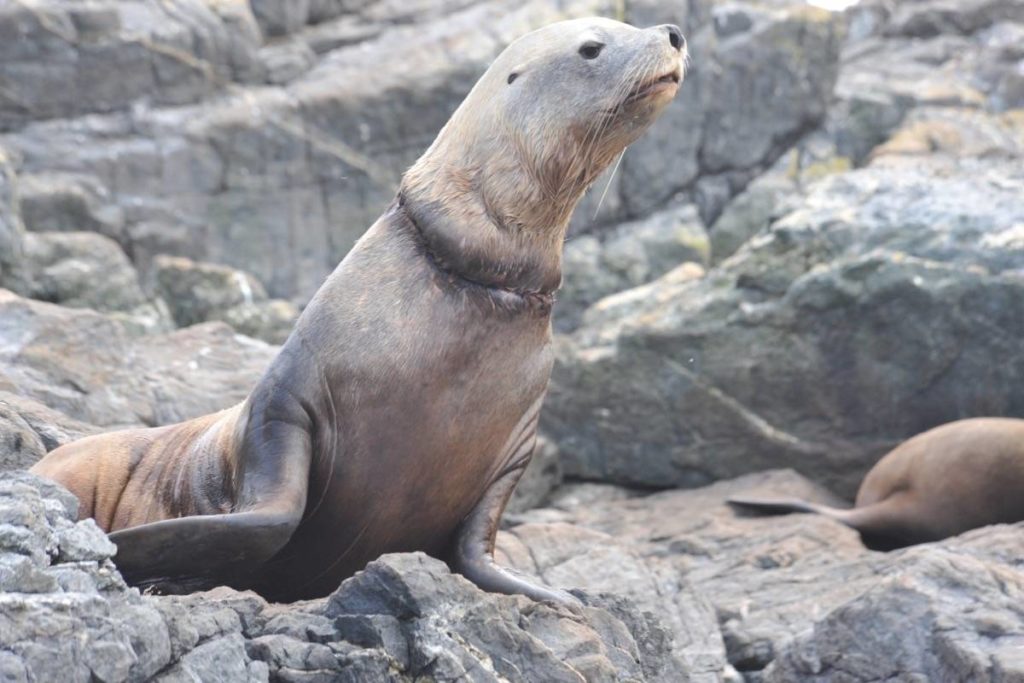 Rescue staff determined the plastic band cut the protected animal’s neck approximately two inches
Rescue staff determined the plastic band cut the protected animal’s neck approximately two inches
A Steller sea lion is recovering after being disentangled from a piece of plastic that cut its neck approximately two inches.The male sea lion, weighing approximately 500 kilograms, was reported to the Vancouver Aquarium marine mammal rescue centre team after it was seen near Sooke with a plastic packing band wrapped tightly around its neck.Rescue staff, along with officers from Fisheries and Oceans Canada and a veterinarian from the SeaDoc Society, joined forces Monday at the Race Rocks Ecological Reserve to rescue the animal, which is protected in Canada as a species of special concern under the federal Species at Risk Act.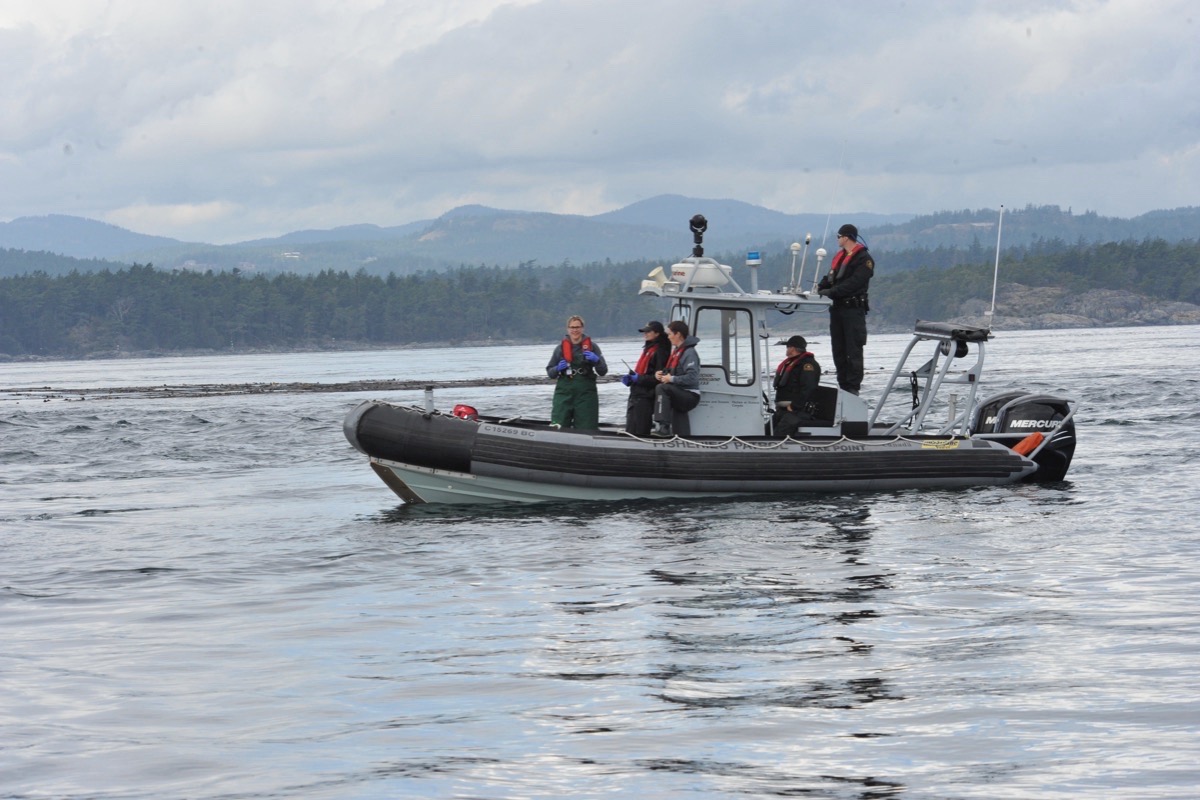
| Rescue staff joined forces with Fisheries and Oceans Canada and the SeaDoc Society to disentangle the sea lion at the Race Rocks Ecological Reserve. (SeaDoc Society photo) |
Since Race Rocks is made up of rough terrain and has strong currents, it took hours of jockeying positions for Martin Haulena, the head veterinarian at the aquarium, to dart and sedate the sea lion. Haulena did this from a distance using an air-powered dart containing immobilization agents.
| Over the past two decades, Vancouver Aquarium head veterinarian Martin Haulena has helped develop a precise drug combination to ensure that sea lions can be safely freed, without harming itself or others. (SeaDoc Society photo) |
The sea lion entered the water after being darted, which Lindsaye Akhurst, manager of the aquarium’s rescue centre said is a common response. Then, with the help of Race Rocks Eco-Guardians in the lighthouse acting as “eyes in the sky,” the team was able to spot the sea lion in some kelp and remove the plastic band that had cut into the animal’s neck approximately 2 inches.
| Once the sedated sea lion was located in the water, the rescue team discovered that while the top of the plastic band was still slightly mobile, the bottom, or ventral portion, had cut into the animal’s neck approximately two inches. (SeaDoc Society photo) |
A release from Ocean Wise said “the depth and severity of the wound indicated that the plastic had been there for some time.”
| In between darting attempts, the Vancouver Aquarium marine mammal rescue team had to pause rescue efforts due to the presence of Southern resident killer whales from J and K pods. (SeaDoc Society photo) |
Team members tagged the sea lion’s flippers so if there are further reports about it rescuers will be able to identify the animal.
READ MORE: Entangled humpback calf rescued off west coast of Vancouver Island
To date, rescue centre staff have rescued over 20 entangled sea lions.
B.C. surveys have documented hundreds more entangled sea lions in recent years, the release said, with some of the worst plastic offenders being ghost gear, including nets and ropes, and discarded trash such as the plastic packing bands used in packaging and shipping, which ensnare animals.
Not only are plastic items uncomfortable for marine mammals, Akhurst said, but the sea lions continue to grow while the plastic around them does not, which sometimes results in death.
READ MORE: Brand new vessel for Massett Marine Rescue
Akhurst said Ocean Wise is working with the Fisheries and Oceans Canada on a stronger disentanglement program that specifically targets pinnipeds, a group that includes seals, sea lions, and walruses.
In late fall, a multi-day outing is planned that will focus on this problem on the west coast of Vancouver Island.
READ MORE: Sea lion tangled in rope on Vancouver Island
If you see a marine mammal that you believe is in distress, stay back, keep people and pets away, and call the Marine Mammal Rescue Centre at 604-258-SEAL (7325), or the Fisheries and Oceans Canada hotline at 1-800-465-4336.

